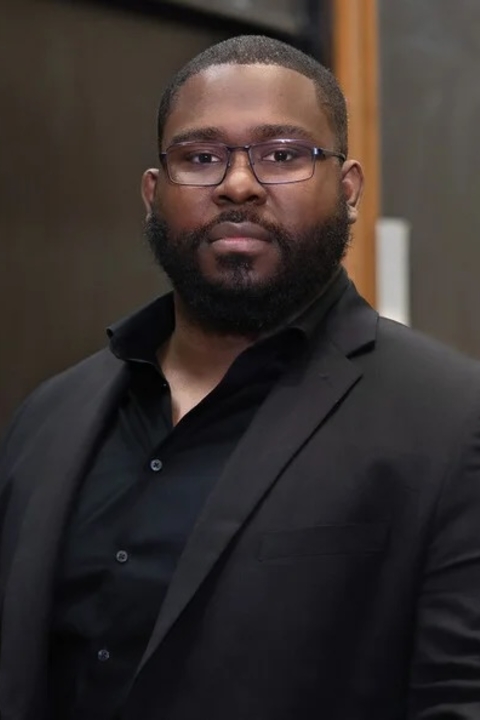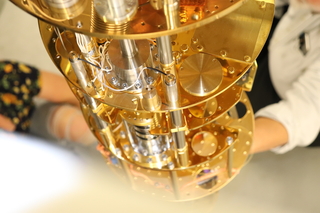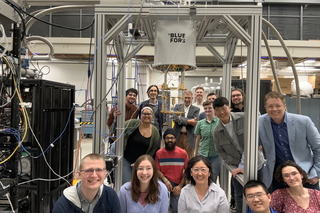Biographical Sketch:
Charles D. Brown II is an Assistant Professor of Physics at Yale University. Prof. Brown has expertise in the generation and measurement of quantum matter in liquid and gas form. He leads an experimental group at Yale that focuses on trapping atoms at nano-Kelvin temperatures in optical lattices to explore how geometry and topology affect emergent properties in exotic quantum materials.
Prof. Brown is both a member of the Yale Quantum Institute and of Yale’s Wright Laboratory.
Prof. Brown joined the faculty of the Yale Department of Physics in 2023. Previously, Brown was a postdoctoral fellow at the University of California, Berkeley, where he worked with Dan Stamper-Kurn on experiments with ultracold atomic gases trapped in optical lattices.
Prof. Brown received his Ph.D. in physics from Yale. As a graduate student in Jack Harris’ group, Brown performed experiments with superfluid-helium-filled optical cavities and constructed and characterized a new experiment for studying magnetically levitated drops of superfluid helium in vacuum.
Brown received his undergraduate degree from the University of Minnesota.
Research:
Professor Brown aims to study single-, few-, and many-body quantum physics by conducting quantum simulation experiments. Quantum simulations are realizations of complex quantum systems for the purpose of understanding their ordered phases and dynamics. His group traps ultracold atoms in optical lattice potentials (an ultracold atom quantum simulator), which is the spatially periodic potential the atoms experience in the intensity standing wave of several intersecting lasers. In doing so, the Brown group aims to learn about exotic order phases of ultracold bosons and fermions in optical lattices, how transport works in lattices with unusual geometry (e.g., a “lattice” that lacks translational symmetry), and what role topology plays in the quantum behavior of bosons and fermions in such unusual lattices.
Brown is also a part of the ALPHA collaboration, using his knowledge of superconducting magnets to aid in the axion search.
Education:
Ph.D., Yale University, 2019
Honors & Awards:
Brown was awarded the Air Force Research Laboratory Young Investigator Program Award and National Science Foundation (NSF) CAREER awards for his work exploring the physics of quantum quasicrystals. He is also the recipient of the 2021 Quantum Creators Prize, the 2019 National Academies Ford Foundation Postdoctoral Fellowship, and the 2018 National Academies Ford Foundation Dissertation Fellowship.
Selected Publications:
- C. D. Brown, S. W. Chang, M. N. Schwarz, V. Kozii, A. Avdoshkin, T. H. Leung, J. E. Moore, D. M. Stamper-Kurn, “A Direct Geometric Probe of Singularities in Band Structure” arXiv:2109.03354 (2021).
- C. D. Brown, Y. Wang, M. Namazi, G. I. Harris, M. Uysal, J. G. E. Harris, “Characterization of Levitated Superfluid Helium Drops in High Vacuum” arXiv:2109.05618 (2021).
- T. H. Leung, M. N. Schwarz, S. W. Chang, C. D. Brown, G. Unnikrishnan, D. Stamper-Kurn, “Interaction-Enhanced Group Velocity of Bosons in the Flat Band of an Optical Kagome Lattice”, Phys. Rev. Lett. 125, 133001 (2020)
- A. B. Shkarin, A. D. Kashkanova, C. D. Brown, S. Garcia, K. Ott, J. Reichel, J. G. E. Harris, “Quantum optomechanics in a liquid” Phys. Rev. Lett 122 153601 (2019).
- A. D. Kashkanova, A. B. Shkarin, C. D. Brown, N. E. Flowers-Jacobs, L. Childress, S. W. Hoch, L. Hohmann, K. Ott, J. Reichel, J. G. E. Harris. “Superfluid Brillouin Optomechanics” Nature Physics 13, 74-79 (2017).
- ORCID publications




